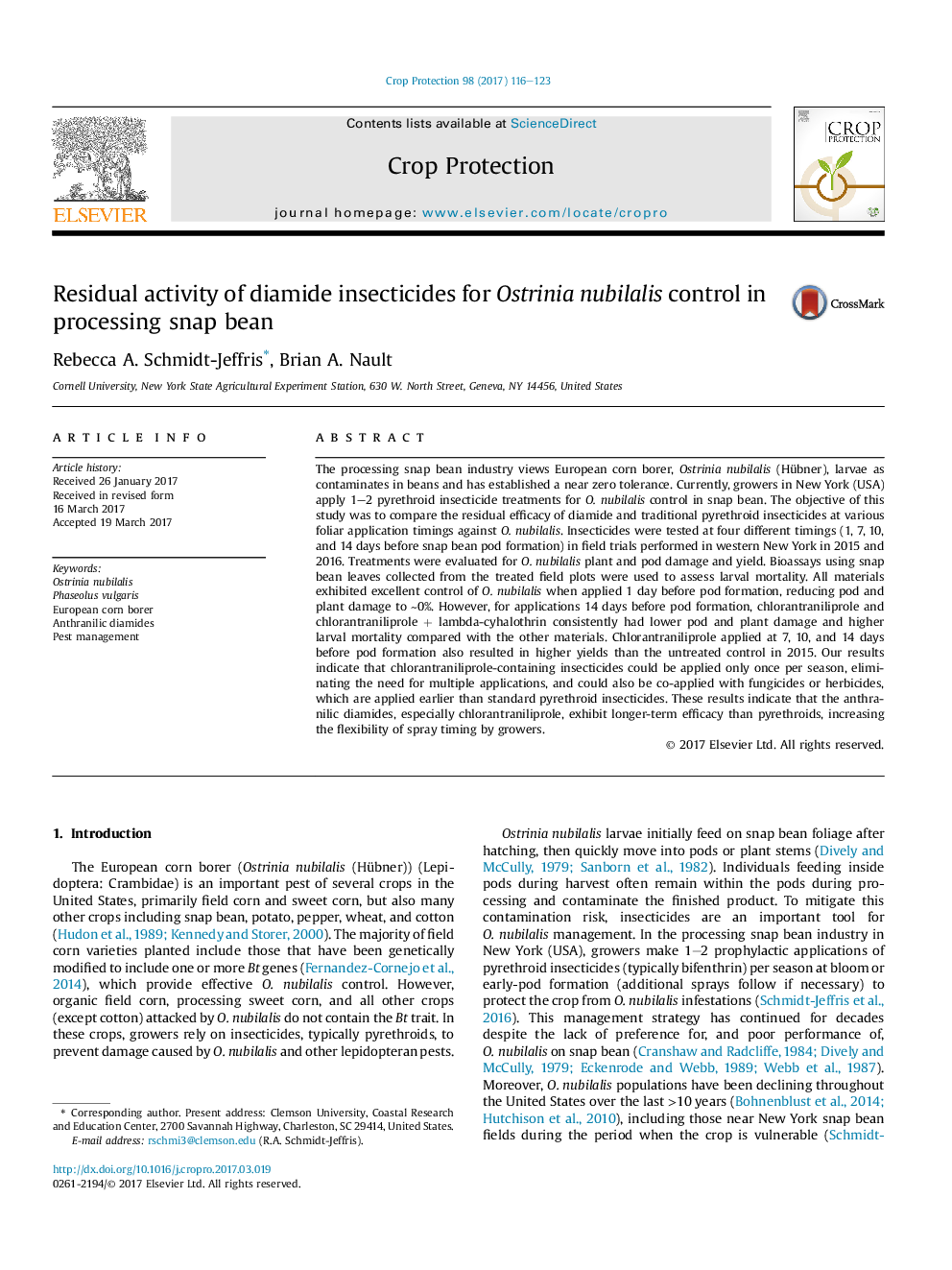| Article ID | Journal | Published Year | Pages | File Type |
|---|---|---|---|---|
| 5760890 | Crop Protection | 2017 | 8 Pages |
Abstract
The processing snap bean industry views European corn borer, Ostrinia nubilalis (Hübner), larvae as contaminates in beans and has established a near zero tolerance. Currently, growers in New York (USA) apply 1-2 pyrethroid insecticide treatments for O. nubilalis control in snap bean. The objective of this study was to compare the residual efficacy of diamide and traditional pyrethroid insecticides at various foliar application timings against O. nubilalis. Insecticides were tested at four different timings (1, 7, 10, and 14 days before snap bean pod formation) in field trials performed in western New York in 2015 and 2016. Treatments were evaluated for O. nubilalis plant and pod damage and yield. Bioassays using snap bean leaves collected from the treated field plots were used to assess larval mortality. All materials exhibited excellent control of O. nubilalis when applied 1 day before pod formation, reducing pod and plant damage to â¼0%. However, for applications 14 days before pod formation, chlorantraniliprole and chlorantraniliprole + lambda-cyhalothrin consistently had lower pod and plant damage and higher larval mortality compared with the other materials. Chlorantraniliprole applied at 7, 10, and 14 days before pod formation also resulted in higher yields than the untreated control in 2015. Our results indicate that chlorantraniliprole-containing insecticides could be applied only once per season, eliminating the need for multiple applications, and could also be co-applied with fungicides or herbicides, which are applied earlier than standard pyrethroid insecticides. These results indicate that the anthranilic diamides, especially chlorantraniliprole, exhibit longer-term efficacy than pyrethroids, increasing the flexibility of spray timing by growers.
Related Topics
Life Sciences
Agricultural and Biological Sciences
Agronomy and Crop Science
Authors
Rebecca A. Schmidt-Jeffris, Brian A. Nault,
